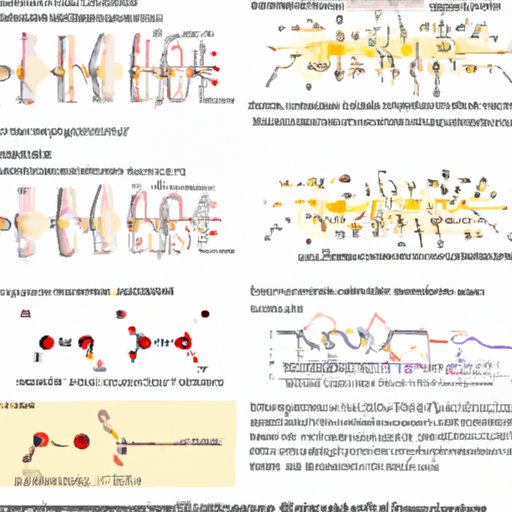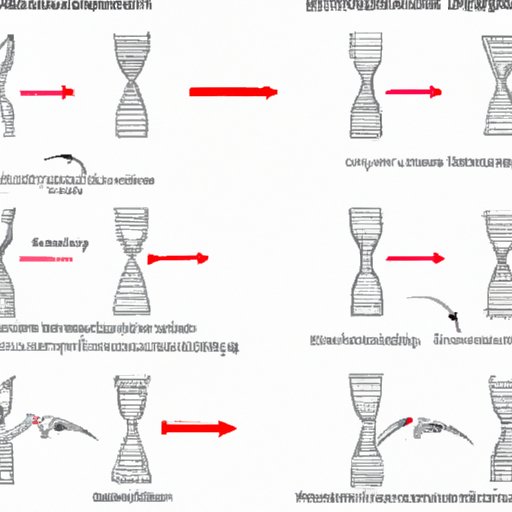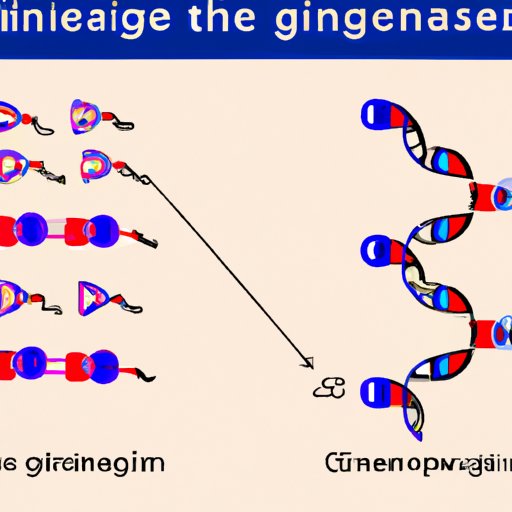Introduction
In order to understand why the lagging strand is synthesized in a discontinuous fashion, it is important to first define what is meant by discontinuous synthesis. Discontinuous synthesis is a process of DNA replication where the strands are replicated separately in short segments rather than one continuous strand. This article will explore the significance of discontinuous synthesis for the lagging strand, uncover its role in DNA replication, and ultimately attempt to understand the need for discontinuous synthesis of the lagging strand.

Exploring the Significance of Discontinuous Synthesis for Lagging Strands
When discussing discontinuous synthesis, it is important to consider the role of the lagging strand in DNA replication. In DNA replication, the two strands of the double helix separate and each strand serves as a template for the production of a new complementary strand. The leading strand is synthesized continuously in the same 5′ to 3′ direction as the original strand, while the lagging strand is synthesized in short segments that are assembled later into a full-length strand. Thus, the lagging strand is synthesized in a discontinuous fashion.
What is Discontinuous Synthesis and How Does it Apply to the Lagging Strand?
Discontinuous synthesis is the process by which DNA is replicated in short segments, or “Okazaki fragments”, rather than in one continuous strand. This process occurs on the lagging strand, which is the strand that runs opposite to the direction of the replication fork. The replication fork is a Y-shaped structure that forms when the two strands of the double helix separate during DNA replication. As DNA replicates, the leading strand is synthesized continuously in the same 5′ to 3′ direction as the original strand, while the lagging strand is synthesized in short segments that are assembled later into a full-length strand.

Uncovering the Role of Discontinuous Synthesis in DNA Replication
Discontinuous synthesis plays a key role in DNA replication. During DNA replication, DNA polymerase can only synthesize in the 5′ to 3′ direction; thus, the lagging strand must be synthesized in short segments moving away from the replication fork. These short segments, known as Okazaki fragments, are subsequently joined together by DNA ligase to form a full-length strand.
The process of discontinuous synthesis is also important in ensuring that DNA replication is accurate. During DNA replication, errors may occur due to mispairing of bases, which can lead to mutations. By breaking down DNA replication into short segments, DNA polymerase can correct any mistakes before they become permanent. This allows for more accurate replication of the genetic material.
Understanding the Need for Discontinuous Synthesis of the Lagging Strand
It is clear that discontinuous synthesis plays an important role in DNA replication. However, it is necessary to understand why this process is necessary for the lagging strand. To answer this question, it is helpful to review the structure of the double helix.
The double helix consists of two strands of DNA that are wound around each other in a spiral formation. During DNA replication, the two strands of the double helix separate and each strand serves as a template for the production of a new complementary strand. The leading strand is synthesized continuously in the same 5′ to 3′ direction as the original strand, while the lagging strand is synthesized in short segments that are assembled later into a full-length strand.
The reason for this is that DNA polymerase can only add nucleotides in the 5′ to 3′ direction. Since the lagging strand is synthesized in the opposite direction of the replication fork (3′ to 5′), DNA polymerase must move away from the replication fork in order to synthesize the lagging strand. This means that the lagging strand must be synthesized in short segments, or Okazaki fragments, which can then be joined together by DNA ligase to form a full-length strand.
Conclusion
In conclusion, the lagging strand is synthesized in a discontinuous fashion because DNA polymerase can only add nucleotides in the 5′ to 3′ direction. Since the lagging strand runs opposite to the direction of the replication fork, DNA polymerase must move away from the replication fork in order to synthesize the lagging strand. This necessitates the use of discontinuous synthesis, whereby the lagging strand is synthesized in short segments that are then joined together by DNA ligase to form a full-length strand.
Discontinuous synthesis is an essential process in DNA replication and plays an important role in ensuring that DNA replication is accurate. By breaking down DNA replication into short segments, DNA polymerase can correct any mistakes before they become permanent. This allows for more accurate replication of the genetic material.
(Note: Is this article not meeting your expectations? Do you have knowledge or insights to share? Unlock new opportunities and expand your reach by joining our authors team. Click Registration to join us and share your expertise with our readers.)
